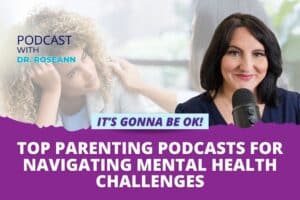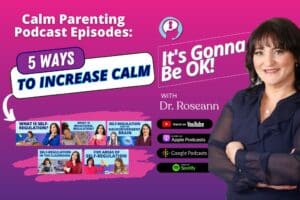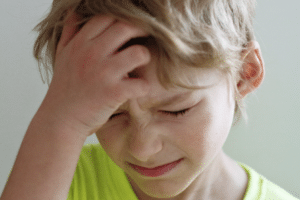Demystifying the Differences: Is ADD and ADHD the Same?
Are you interested in learning more about ADD and ADHD? Well, you’re at the right place. As we dive headfirst into the world of ADD and ADHD, we’ll shed light on their similarities and differences. We’ll also explore science-backed natural solutions that can make a world of difference for your young ones.
Let's begin by demystifying the acronyms ADD and ADHD. They both fall under the umbrella of neurodevelopmental disorders but are as distinct as apples and oranges, despite the confusingly similar names.
What is ADD?
Attention-Deficit Disorder or ADD is similar to having a brain suffering from lack of focus. Imagine your child trying to pay attention in class but getting distracted by a fly buzzing near the window. Other times, their thoughts wander into the land of unicorns and rainbows.
ADD, also known as Inattentive ADHD, is one of the subtypes of Attention-Deficit/Hyperactivity Disorder. Children with ADD face an uphill battle when it comes to paying attention and staying on task.
These kids often struggle with what healthcare professionals refer to as “careless mistakes.” They might forget to turn in their homework, misspell their name, or leave a trail of socks leading to the refrigerator instead of the laundry basket.
The short attention span of these kids defines them. Trying to engage them in a lengthy conversation can be very difficult. You start with one topic, and before you know it, they've traveled through a dozen unrelated subjects.
The school environment can be particularly challenging for children with ADD as they struggle to follow the teacher's instructions. That’s how the frustration builds, not just for the child, but for their teachers and parents as well.
However, it's essential to recognize that ADD isn't merely a result of being disorganized or forgetful. It's a neurodevelopmental disorder with real and lasting impacts on daily life. Kids with this form of ADHD often require extra support and environmental adjustments to thrive academically and socially.
What is ADHD?
Attention-Deficit Hyperactivity Disorder or ADHD is not just about inattention, but also about hyperactivity and impulsivity. For example, your child is attempting to focus on a single task, like finishing their homework, but it's as if their brain has been hijacked by a whirlwind of thoughts and movements.
ADD, as a subtype of ADHD, primarily manifests as a struggle to pay attention and maintain focus. However, hyperactive-impulsive ADHD takes things up a notch. It's like your child has an internal motor that's constantly revving, and the brakes are nowhere to be found.
Children with hyperactive-impulsive type ADHD may constantly fidget, squirm, and stomp their feet during activities. But hyperactivity isn't just limited to physical restlessness. It also extends to their mind, where thoughts bounce around like pinballs in a frenzy, making it hard to pay attention.
Impulsivity, another hallmark of hyperactive-impulsive ADHD, affects your child's decision-making process. They might blurt out whatever crosses their mind, often at the most awkward moments.
Furthermore, ADD and hyperactive-impulsive ADHD can manifest in your child at the same time. This condition is called the combined ADHD presentation. It means that aside from having hyperactive and impulsive behaviors, they also experience challenges when it comes to maintaining attention or staying focused.
In school, these children may find it difficult to sit still during lessons or follow instructions carefully. Starting and finishing tasks is very hard. They might inadvertently disrupt the class, not because they want to, but because their internal engine is perpetually running at high speed and they just aren’t connected enough to put the brakes on.
Is ADD and ADHD the Same?
Now, let's tackle the million-dollar question: Is ADD the same as ADHD? The short answer is no. The terms ADD and ADHD have evolved over the years, and keeping up with the name changes is almost as challenging as keeping up with your child's energy levels.
While the terms ADD (Attention Deficit Disorder) and ADHD (Attention-Deficit/Hyperactivity Disorder) are often used interchangeably, they technically refer to two different presentations of the same underlying condition.
The official term used by the American Psychiatric Association's Diagnostic and Statistical Manual of Mental Disorders (DSM-5) is ADHD. So, even when we're talking about individuals who primarily struggle with inattention or ADD, it’s also ADHD. It means that the term ADD is an outdated term.
The DSM-5 brought all the various types and presentations of ADHD under one umbrella, simplifying the terminology. So, when people use “ADHD,” they might be referring to any of the following:
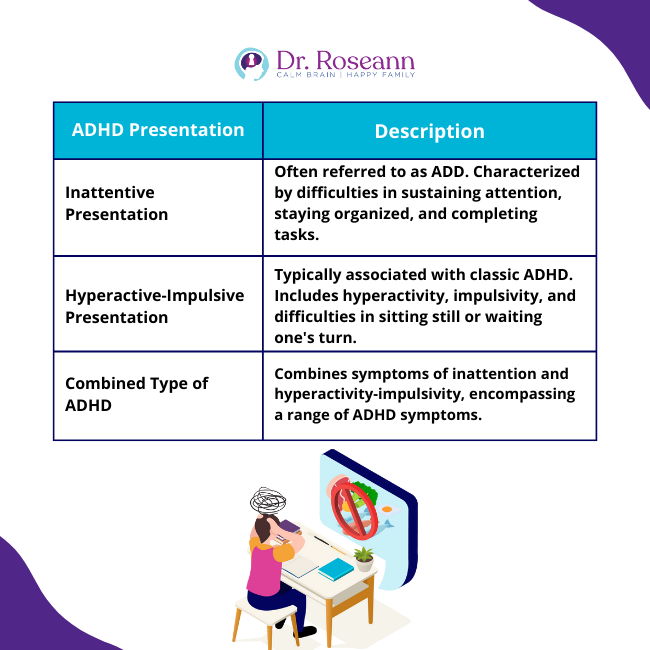
Symptoms of Inattentive ADHD or ADD
- Difficulty sustaining attention in tasks or play activities.
- Frequently makes careless mistakes in schoolwork or other activities.
- Struggles to follow through on instructions, chores, or assignments.
- Avoids or is reluctant to engage in tasks that require sustained mental effort.
- Frequently loses items necessary for tasks or activities.
- Easily distracted by extraneous stimuli.
- Forgetfulness in daily activities.
- Often appears to not listen when spoken to directly.
- Difficulty organizing tasks and activities.
Symptoms of Hyperactive-Impulsive ADHD
- Fidgets with hands or feet or squirms in seat.
- Leaves seat in situations where remaining seated is expected.
- Runs or climbs in inappropriate situations
- Feelings of restlessness
- Unable to play or engage in activities quietly.
- Talks excessively.
- Interrupts or intrudes on others' conversations or games.
- Blurts out answers before questions are completed.
- Difficulty waiting one's turn.
- Often interrupts or butts in on others' activities.
Possible Causes of ADD and ADHD
Now, let's explore the causes. While researchers haven't yet cracked the entire code of ADD and ADHD, they do agree that certain factors play a significant role in its development. Here are some of the possible causes of these conditions:
1. Genetics
ADHD and ADD tend to run in families, suggesting a strong genetic component. If close family members have ADHD, such as a parent or sibling, the risk of inheriting the condition increases (Grimm et al., 2020). It is important to note that there are many reasons why a child can be unfocused and genetics aren’t the only reason.
2. Brain Structure and Function
Differences in brain structure and function have been observed in people with ADHD. These differences involve areas of the brain responsible for attention, impulse control, and executive functions.
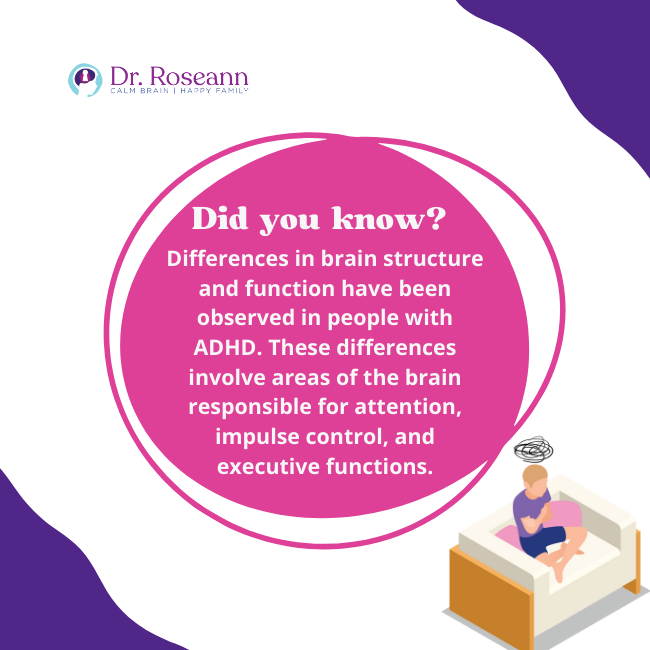
3. Neurotransmitters
Imbalances in neurotransmitters, such as dopamine and norepinephrine, are thought to play a role in ADHD. Such neurotransmitters are involved in regulating attention, motivation, and impulse control.
4. Environmental Factors
Exposure to certain environmental factors during pregnancy or early childhood may contribute to ADHD risk. These include prenatal exposure to alcohol, tobacco smoke, lead, or maternal stress during pregnancy.
5. Premature Birth and Low Birth Weight
Some studies have suggested a link between premature birth or low birth weight and an increased risk of developing ADHD. Children born at lower birth weights manifested greater symptoms of ADHD (Momany et al., 2018).
6. Brain Injury or Trauma
Traumatic brain injury, particularly when it affects the areas of the brain responsible for attention and impulse control, may contribute to the development of ADHD-like symptoms (Adeyemo et al., 2014).
7. Parenting and Family Factors
While not a direct cause, family dynamics, and parenting styles can influence the severity of ADHD symptoms. Positive parenting practices and a supportive family environment can help manage symptoms effectively.
8. Diet and Nutrition
Some research has explored the potential role of certain dietary factors, food additives, and sugar in exacerbating ADHD symptoms. The elimination of food products containing synthetic food additives, like artificial food dyes and preservatives, positively impacts the behavior of children with ADHD (Konikowska et al., 2012).
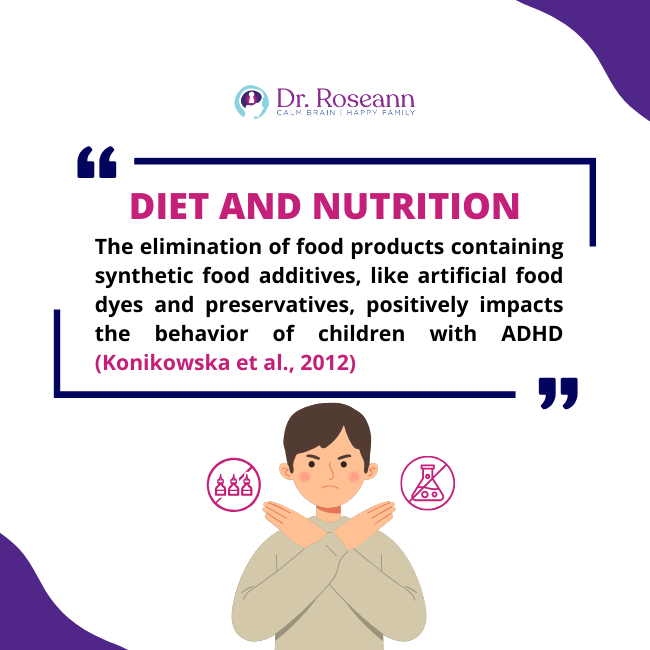
Treatment Options for ADD and ADHD
As mental health professionals diagnose ADHD, they must also help parents explore treatment options. And while ADHD medications can be a valuable tool in managing ADHD symptoms, many parents are understandably wary of potential side effects. That's where science-backed natural solutions come into play. These solutions offer hope without drug administration.
Nutrition
This concept is not rocket science. A well-balanced diet rich in magnesium, omega-3 fatty acids, antioxidants, and protein can do wonders for brain health. These supplements are known to help boost cognitive development.
Exercise
Encourage your kids to move those limbs. Exercise not only releases pent-up energy but also triggers the release of brain-boosting chemicals like dopamine and serotonin (Archer & Kostrzewa, 2011).
Sleep
Sleep problems are very common in children with ADHD to the extent that they exacerbate their daytime symptoms (Kirov & Brand, 2014). So, ensure your child gets enough rest. Sleep is the brain's way of hitting the reset button, and sleep-deprived kids often struggle more with attention and develop mood disorders.
Mindfulness
Teach your child mindfulness techniques to manage stress. Deep breaths and grounding exercises can work wonders when they're on the brink of a meltdown. One study shows that mindfulness meditation promotes improvements in attentional processing (Van der Oord et al., 2011).
Cognitive Behavioral Therapy
Consider Cognitive Behavioral Therapy or CBT to give your child the mental toolbox needed to tackle the challenges of ADHD. Behavior therapy helps children recognize and change negative thought patterns and behaviors.
Neurofeedback
Neurofeedback, also known as QEEG biofeedback, is a non-invasive therapeutic approach that aims to help children with ADHD and other mental health conditions enhance their brain function. It can regulate brain activity, help improve attention and concentration, and reduce impulsivity and hyperactivity (Van Doren et al., 2018).
PEMF
Pulsed Electromagnetic Field Therapy or PEMF influences brainwave activities by emitting electromagnetic fields that can penetrate the brain. The therapy may help normalize the brain waves that are often irregular in individuals with ADHD. It helps promote more balanced patterns to improve attention and impulse control (Pawluk & Layne, 2017).
Support Groups
Don't underestimate the power of support groups. Connecting with other parents of children with ADHD can provide a lifeline. Sharing stories, tips, and tricks can make you feel less like you're navigating a stormy sea alone and more like you're part of a fleet.
ADD and ADHD may have their quirks and differences, but they are real neurodevelopmental disorders that affect children and adults alike. Understanding the nuances between them can help you make informed decisions about your child's ADHD treatment plan.
The BrainBehaviorResetTM Program is a revolutionary approach designed to empower children with ADHD to harness their unique strengths and thrive in a world that often feels overwhelming. It's a dynamic, personalized system that uses natural science-backed solutions that recognize the diverse needs of kids with ADHD and tailors interventions to suit their specific challenges and goals.
If your child is navigating the challenges of ADHD or other mental health conditions, we’re here to offer hope, support, and a path to a brighter future. Together, we can reset the patterns that hold you back and unlock the full potential within them. Welcome to a life where ADHD is not a limitation but a unique strength waiting to be harnessed.
Parent Action Steps
☐ Familiarize yourself with the differences and similarities of ADD and ADHD.
☐ Consult with a qualified healthcare provider for an evaluation and diagnosis.
☐ Familiarize yourself with the common symptoms of hyperactivity and inattention.
☐ Recognize that ADHD has multiple potential causes.
☐ Explore various treatment options.
☐ Consider exploring comprehensive ADHD management programs.
☐ Take this ADHD Quiz to know if your kid has ADHD or something else.
☐ Get a personalized treatment approach for your child with our Solution Matcher.
Citations
Adeyemo, B. O., Biederman, J., Zafonte, R., Kagan, E., Spencer, T. J., Uchida, M., Kenworthy, T., Spencer, A. E., & Faraone, S. V. (2014). Mild Traumatic Brain Injury and ADHD. Journal of Attention Disorders, 18(7), 576–584. https://doi.org/10.1177/1087054714543371
Archer, T., & Kostrzewa, R. M. (2011). Physical Exercise Alleviates ADHD Symptoms: Regional Deficits and Development Trajectory. Neurotoxicity Research, 21(2), 195–209. https://doi.org/10.1007/s12640-011-9260-0
Grimm, O., Kranz, T. M., & Reif, A. (2020). Genetics of ADHD: What Should the Clinician Know? Current Psychiatry Reports, 22(4). https://doi.org/10.1007/s11920-020-1141-x
Kirov, R., & Brand, S. (2014). Sleep problems and their effect on ADHD. Expert Review of Neurotherapeutics, 14(3), 287–299. https://doi.org/10.1586/14737175.2014.885382
Konikowska , K., Rozanska, D., & Regulska-Ilow, B. (2012). The influence of components of diet on the symptoms of ADHD in children. Roczniki Państwowego Zakładu Higieny, 63(2). https://agro.icm.edu.pl/agro/element/bwmeta1.element.agro-de6c7519-5417-4e0c-8d19-8cff4e095b75
Momany, A. M., Kamradt, J. M., & Nikolas, M. A. (2018). A Meta-Analysis of the Association Between Birth Weight and Attention
Deficit Hyperactivity Disorder. Journal of Abnormal Child Psychology, 46(7), 1409–1426. https://doi.org/10.1007/s10802-017-0371-9
Pawluk, W., & Layne, C. (2017). Power Tools for Health: How pulsed magnetic fields (PEMFs) help you. FriesenPress.
Van der Oord, S., Bögels, S. M., & Peijnenburg, D. (2011). The Effectiveness of Mindfulness Training for Children with ADHD and Mindful Parenting for their Parents. Journal of Child and Family Studies, 21(1), 139–147. https://doi.org/10.1007/s10826-011-9457-0
Van Doren, J., Arns, M., Heinrich, H., Vollebregt, M. A., Strehl, U., & K. Loo, S. (2018). Sustained effects of neurofeedback in ADHD: a systematic review and meta-analysis. European Child & Adolescent Psychiatry, 28(3), 293–305. https://doi.org/10.1007/s00787-018-1121-4
Always remember… “Calm Brain, Happy Family™”
Disclaimer: This article is not intended to give health advice and it is recommended to consult with a physician before beginning any new wellness regime. *The effectiveness of diagnosis and treatment vary by patient and condition. Dr. Roseann Capanna-Hodge, LLC does not guarantee certain results.
Are you looking for SOLUTIONS for your struggling child or teen?
Dr. Roseann and her team are all about science-backed solutions, so you are in the right place!
Learn more about Dr. Roseann’s groundbreaking supplement line for children with ADHD, Autism, Anxiety, OCD, Depression, PANS, PANDAS, mood disorders, and various behavioral challenges.
Empower yourself with natural solutions for your child's mental health and behavior. Download our FREE quick start guide and start supporting your child today.
You can get her books for parents and professionals, including: It’s Gonna Be OK™: Proven Ways to Improve Your Child’s Mental Health, Teletherapy Toolkit™ and Brain Under Attack: A Resource For Parents and Caregivers of Children With PANS, PANDAS, and Autoimmune Encephalopathy.
If you are a business or organization that needs proactive guidance to support employee mental health or an organization looking for a brand representative, check out Dr. Roseann’s professional speaking page to see how we can work together.
Dr. Roseann is a Children’s Mental Health Expert and Therapist who has been featured in/on hundreds of media outlets including, CBS, NBC, FOX News, PIX11 NYC, The New York Times, The Washington Post, Business Insider, USA Today, CNET, Marth Stewart, and PARENTS. FORBES called her, “A thought leader in children’s mental health.”

She is the founder and director of The Global Institute of Children’s Mental Health and Dr. Roseann Capanna-Hodge, LLC. Dr. Roseann is a Board Certified Neurofeedback (BCN) Practitioner, a Board Member of the Northeast Region Biofeedback Society (NRBS), Certified Integrative Mental Health Professional (CIMHP) and an Amen Clinic Certified Brain Health Coach. She is also a member of The International Lyme Disease and Associated Disease Society (ILADS), The American Psychological Association (APA), Anxiety and Depression Association of America (ADAA) National Association of School Psychologists (NASP), International OCD Foundation (IOCDF) International Society for Neurofeedback and Research (ISNR) and The Association of Applied Psychophysiology and Biofeedback (AAPB).
© Roseann-Capanna-Hodge, LLC 2023



